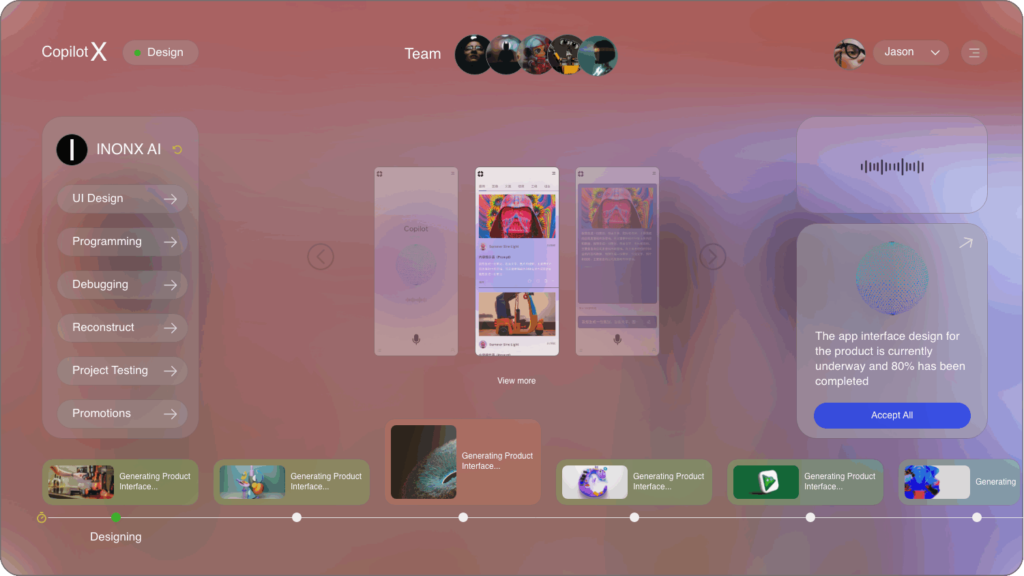As we step into 2024, the field of Artificial Intelligence continues to make significant strides, showcasing groundbreaking advancements and innovative applications that transform multiple industries. From newly released large models like Google Gemini 1.5 Pro to emerging specialized technologies aimed at enhancing reliability and mitigating bias in AI, the landscape is evolving rapidly. This article delves into these advancements, highlighting their features, functionalities, and potential impacts on sectors such as healthcare, business automation, and education.
One of the most noteworthy developments is the recent release of **Google Gemini 1.5 Pro**, a cutting-edge large AI model that incorporates advanced multimodal capabilities. This model stands out due to its exceptional ability to process and analyze various forms of data, including text, images, and videos, in a unified manner. The integration of multimodal functionality enables Gemini 1.5 Pro to provide more nuanced and contextually relevant outputs, making it a valuable asset for industries requiring comprehensive analysis and understanding.
The model boasts an extended context understanding parameter, allowing it to retain more information from previous interactions. This feature enhances its ability to generate coherent and contextually appropriate responses in conversation. Furthermore, Gemini 1.5 Pro’s proficiency in tasks such as natural language processing and content generation will help streamline workflows in fields like marketing and customer support. As companies increasingly rely on AI for customer interactions, Gemini 1.5 Pro positions itself as a critical tool for improving user engagement and satisfaction (Source: Google AI Blog, 2024).
In addition to large models, various **tools and APIs** have recently emerged, seamlessly integrating AI into existing workflows across industries. For instance, Palantir’s latest AI platform offers enhanced data analytics capabilities for businesses by employing advanced machine learning algorithms that improve decision-making processes. By integrating AI-powered insights directly within the platform, companies can better interpret data sets, thereby enhancing operational efficiency and driving strategic initiatives (Source: Palantir Technologies, 2024).
Moreover, new APIs are being developed specifically to address the needs of creative industries. These tools utilize state-of-the-art AI to generate ideas, enhance visual content, and manage entire creative campaigns. With the rise of AI in **creative campaigns**, businesses can leverage algorithms that analyze consumer preferences, predicting which types of content will resonate with target audiences. This not only expedites the creative process but also enables companies to harness data-driven insights to optimize their marketing strategies (Source: Creative AI Conference, 2024).
Alongside these advancements, there’s growing interest in specialized AI technologies, particularly those focusing on developing **more reliable and debiased LLMs (Large Language Models)**. As concerns regarding bias in AI systems mount, researchers are striving to create models that minimize these issues. Recent studies have indicated promising results in debiasing techniques that enable models to better reflect a diverse range of perspectives. This not only enhances the reliability of AI applications but fosters a sense of inclusivity in automated conversations and decision-making processes, ensuring fair representation across demographics (Source: Stanford University Research, 2024).
One emerging technology that has garnered attention is advanced **object detection** algorithms. These algorithms have seen significant improvements in accuracy and speed, making them indispensable in sectors such as retail and security. For instance, in retail, object detection systems enhance inventory management by providing real-time insights into stock levels and customer preferences. In cybersecurity, improved object detection can help identify anomalous behavior in surveillance footage, ensuring quicker responses to potential threats (Source: Computer Vision and Pattern Recognition Conference, 2024).
Innovative AI products are also emerging for enterprise applications. Companies are launching comprehensive solutions that integrate AI across multiple departments, from human resources to finance. These products, equipped with advanced predictive analytics, facilitate smoother operations by anticipating trends and providing actionable insights. For instance, an AI-driven human resources tool can analyze employee performance data to identify potential issues before they escalate, improving workplace dynamics and employee retention (Source: Enterprise AI Summit, 2024).
Additionally, AI’s impact on **healthcare** is becoming increasingly pronounced. With the development of AI diagnostic tools, healthcare providers can analyze patient data more effectively, allowing for early detection of conditions and personalized treatment plans. Recent advancements include AI algorithms that can analyze medical imaging with a high degree of accuracy, significantly reducing the time it takes for radiologists to diagnose critical conditions such as tumors or fractures (Source: Journal of Medical AI, 2024).
In the realm of **business automation**, AI-enabled robotic process automation (RPA) tools are revolutionizing how companies operate. Automating repetitive tasks, such as data entry and invoice processing, allows employees to focus on strategic initiatives that drive growth. The introduction of more sophisticated AI models within these RPA systems enhances their ability to learn and adapt, resulting in improved efficiency and productivity (Source: Automation World Conference, 2024).
Turning to **education**, AI is facilitating personalized learning experiences that cater to individual student needs. Innovative platforms powered by AI can adapt educational content based on students’ performance and learning styles, ensuring they receive a tailored educational experience. Furthermore, AI-driven analytics can provide educators with insights into student engagement and progress, enabling them to adjust their teaching methods accordingly (Source: EdTech Digest, 2024).
In conclusion, the advancements in AI during 2024 illustrate a rapidly evolving landscape that promises to reshape industries as we know them. From the release of highly capable large models like Google Gemini 1.5 Pro to the emergence of specialized AI technologies addressing pressing concerns such as bias and reliability, the future looks promising. Coupled with innovative products aimed at enhancing functionalities across sectors like healthcare, business automation, and education, AI stands poised to become an integral part of our everyday lives. As we continue to harness these technologies, ethical considerations and responsible AI deployment will remain essential to ensuring that advancements benefit society as a whole.
By staying informed about these developments, businesses can strategically position themselves to leverage AI’s capabilities and stay ahead in a competitive landscape.
—
**Sources:**
– Google AI Blog, 2024
– Palantir Technologies, 2024
– Creative AI Conference, 2024
– Stanford University Research, 2024
– Computer Vision and Pattern Recognition Conference, 2024
– Enterprise AI Summit, 2024
– Journal of Medical AI, 2024
– Automation World Conference, 2024
– EdTech Digest, 2024


























